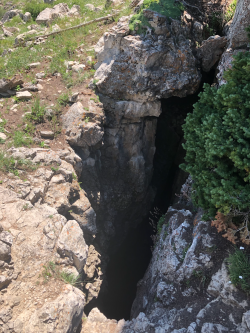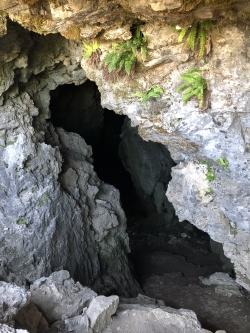
Courtesy & Copyright Mary Heers, Photographer
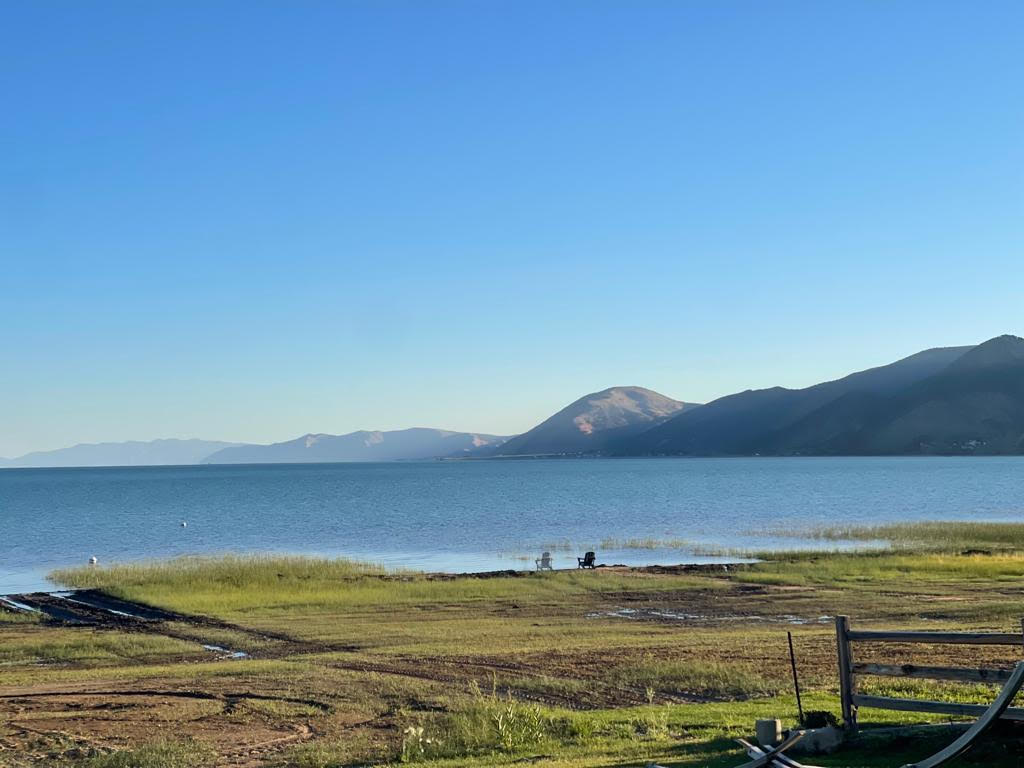 Blue Sky Reflected on the Water of Bear Lake
Blue Sky Reflected on the Water of Bear Lake
Courtesy & Copyright Mary Heers, Photographer
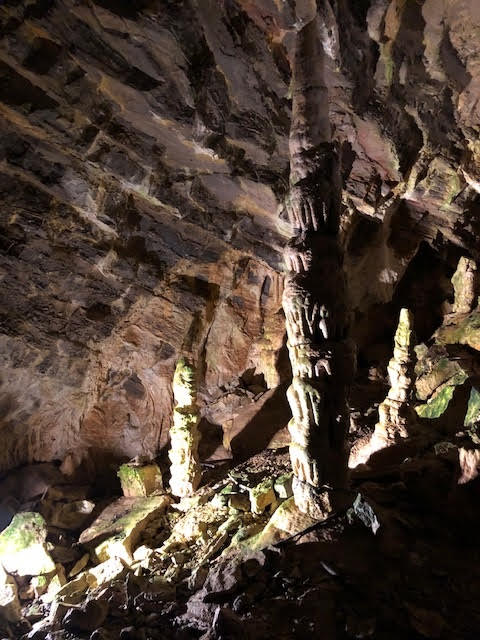 Stalagmites in Minnetonka Cave, St Charles Canyon, West of Bear Lake
Stalagmites in Minnetonka Cave, St Charles Canyon, West of Bear Lake
Courtesy & Copyright Mary Heers, Photographer
 Soda Straw Stalactites in Minnetonka Cave, St Charles Canyon, West of Bear Lake
Soda Straw Stalactites in Minnetonka Cave, St Charles Canyon, West of Bear Lake
Courtesy & Copyright Mary Heers, Photographer
 Small Ribbon Stalactites in Minnetonka Cave, St Charles Canyon, West of Bear Lake
Small Ribbon Stalactites in Minnetonka Cave, St Charles Canyon, West of Bear Lake
Courtesy & Copyright Mary Heers, Photographer
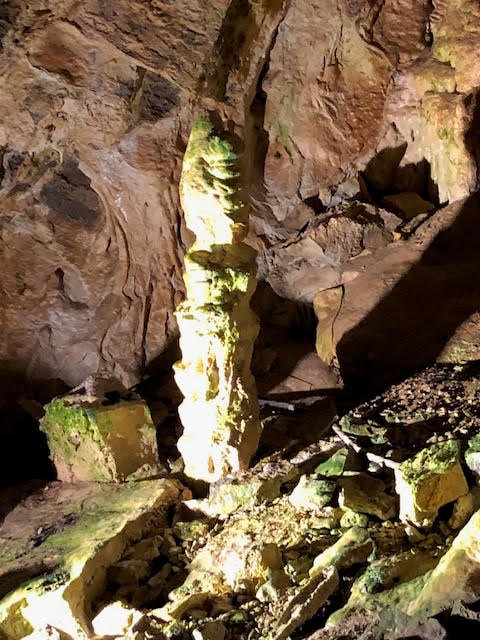 Stalagmite in Minnetonka Cave, St Charles Canyon, West of Bear Lake
Stalagmite in Minnetonka Cave, St Charles Canyon, West of Bear Lake
Courtesy & Copyright Mary Heers, PhotographerIf you stop at the overlook above Bear Lake on a sunny summer day, you may be as surprised as I was to find out that the gray limestone rocks in Logan Canyon are responsible for the brilliant blue color of the lake. Among the wealth of information displayed at the overlook is the fact that as rainwater and melting snow seeps down through the limestone, it picks up tiny bits of calcium. This calcium in the lake water acts as “millions of microscopic mirrors” that reflect the exact color of the blue sky.
Once I started thinking about water seeping through this limestone, I signed up to take a tour of the Minnetonka Caves located above St Charles towards the northern side of the lake. Millions of years ago, water began to seep into small fissures in the rock, widening into larger cracks and puddling into low spots. When the water table dropped, the water drained away, leaving large crevices and 9 open rooms behind.
The cave was discovered in 1906 by Edward Arnell, who was out hunting and shot a grouse that fell just over a nearby ledge. He scrambled down to retrieve the bird, and then he felt it: cold air. Pushing aside some rocks he found the hole in the hillside – just large enough for a man to crawl through.
He found a bear skeleton near the entrance, but no sign that humans had ever been inside the cave before.
In 1939 the WPA went to work enlarging the entrance. They chiseled 444 steps into the rock and paved a rough path between the rooms.
Today the cave is managed by the Montpelier Ranger Station, who lead tours into the cave in the summer months. When my turn came, I slipped on my hoodie, grabbed the ice cold railing, and started down the slippery steps with my group. A generator was keeping the path dimly lit while spotlighting some of the drip formations. I was expecting stalactites and stalagmites, but I was delighted to also see sheets of dripping water frozen in time and looking very much like drapes. Hollow tubes called “soda straws” hung from the ceiling.
About half a mile into the cave our guide stopped us and turned us around. The rest of the cave, he said, was reserved for the five species of bats that spend the winter here. The cave stays at a cool 40 degrees year round – a perfect temperature for hibernating bats who will lower their temperature to near freezing, slow their heartbeat from 200 to 10 beats a minute, and only take a breath every few minutes.
I guess I’ve always envied hibernating mammals like bats and bears who go to sleep fat, doze through the winter, and wake up thin in the spring.
Before we started back up the 444 steps, our guide had one more lesson for us. He turned off the lights to allow us to experience a few moments of utter darkness.
Just as the lights came back on, a drip of cold water fell from the cave ceiling and landed on me. I felt like I’d been kissed.
This is Mary Heers and I’m Wild About Utah.
Credits:
Photos:
Featured Audio: Courtesy & Copyright Patrick Kelly, Bird Sounds Courtesy & Copyright Kevin Colver and Water at end Courtesy FreeSound.org, Sclolex, contributor
Text: Mary Heers, https://cca.usu.edu/files/awards/art-and-mary-heers-citation.pdf
Additional Reading: Lyle Bingham, https://bridgerlandaudubon.org/
Additional Reading
Wild About Utah, Mary Heers’ Postings
Boling, Josh, Karst Topography, Wild About Utah, November 23, 2o2o, https://wildaboututah.org/karst-topography/
“It is a karst limestone cave, formed from ground water flowing through limestone and carving sink-holes and underground waterways.”
Minnetonka Cave, USDA Forest Service, US Department of the Interior, https://www.fs.usda.gov/recarea/ctnf/recarea/?recid=70736
Minnetonka Cave Brochure, USDA Forest Service, US Department of the Interior, 23.308.415.04/04, https://www.fs.usda.gov/Internet/FSE_DOCUMENTS/fsbdev3_015684.pdf
History of Minnetonka Cave, The Herald Journal, August 6, 2020, https://www.hjnews.com/bear_laker/history-of-minnetonka-cave/article_950c5030-d82d-11ea-9bf1-47556f110eed.html
Davis, Jim and Milligan, Mark, Why is Bear Lake so Blue? and other commonly asked questions, Public Information Series 96, Utah Geological Survey, Department of Natural Resources, 2011, https://ugspub.nr.utah.gov/publications/public_information/pi-96.pdf

